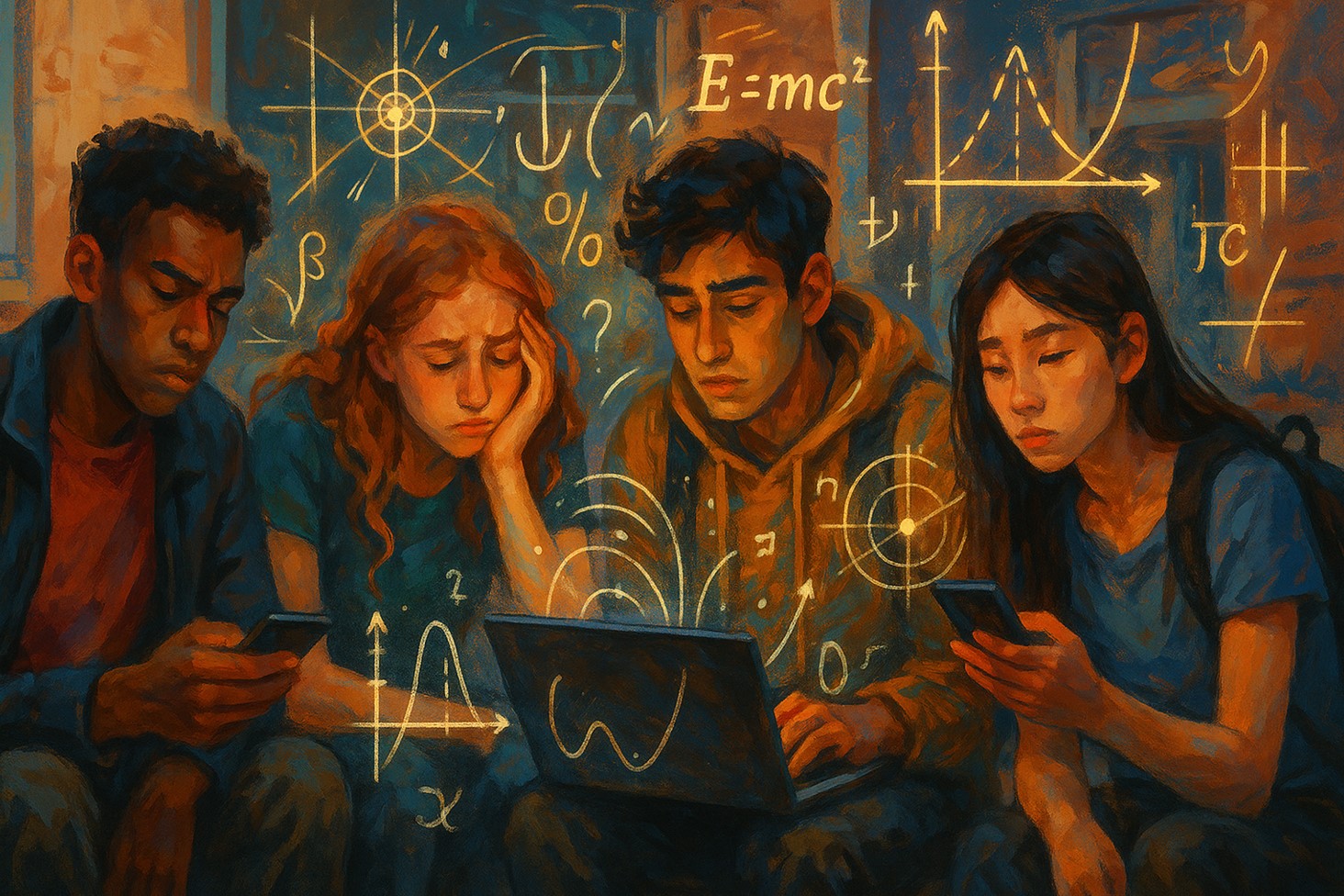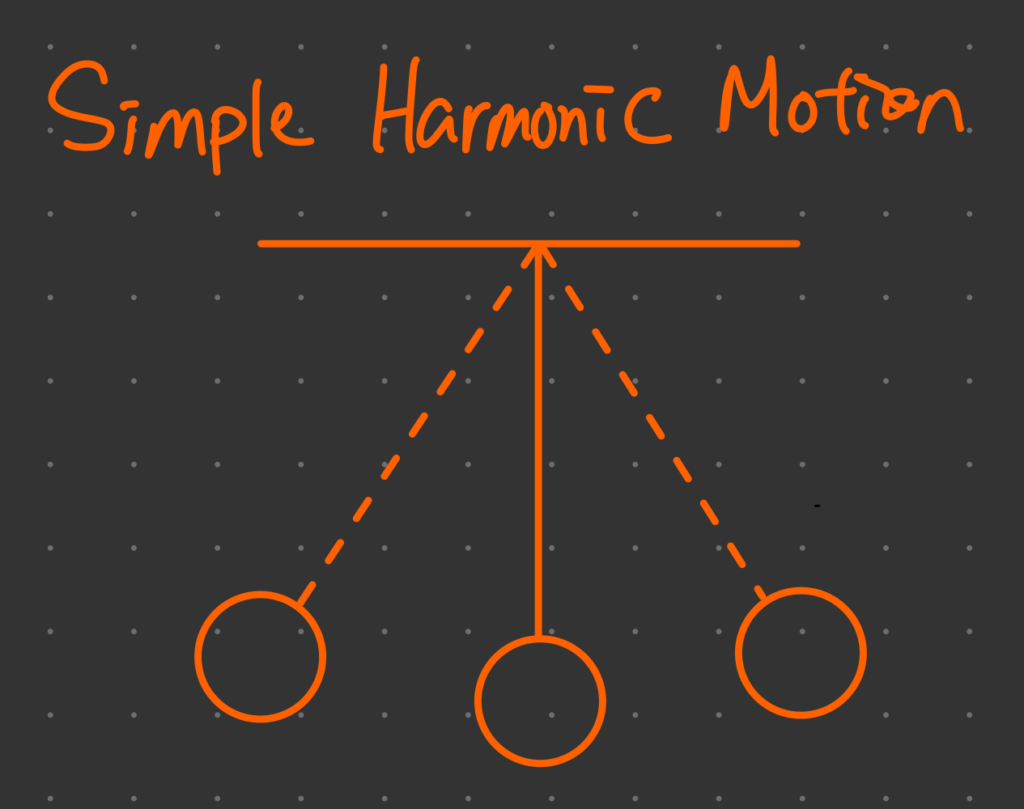The air outside an IB exam room after the final paper feels different. It’s a potent mix of exhaustion, relief, and often, bewildered speculation. For students tackling IB Physics Higher Level in May 2025, that post-exam buzz quickly turned into a collective online outpouring, revealing papers that many found unexpectedly challenging and, at times, baffling. Far from a straightforward test of familiar concepts, the exams felt like a deep dive into specific, sometimes niche, areas of the newly implemented syllabus, leaving many students feeling, in their own words, “cooked.”
Across the globe, from Asia (TZ1) to Europe (TZ2) and beyond, the sentiment echoed loudly on platforms like Reddit. The official exam discussion threads became a digital confessional, a place for shared trauma, tentative comparisons, and the burning question: what will the grade boundaries look like?
The IB Physics May 2025 Papers: A Collective Experience
The IB Physics HL exam typically comprises three papers: Paper 1A (Multiple Choice), Paper 1B (Data Booklet questions), and Paper 2 (Extended Response). Students worldwide sat for these assessments, designed to test their understanding across the broad spectrum of physics topics outlined in the new syllabus.
However, student reactions indicate that the distribution and style of questions in the May 2025 exams felt distinct, even compared to specimen papers. Many felt Paper 2, in particular, presented unexpected hurdles, pushing students to apply knowledge in novel ways or recall concepts that felt less emphasized in their preparation.
Unexpected Guests: Syllabus Surprises and Omissions from IB Physics HL Specimen Papers
A recurring theme among students was the feeling that the exams, especially Paper 2, heavily favored certain topics while seemingly neglecting others that were anticipated to feature prominently.
Electromagnetism Takes Centre Stage
Numerous students pointed to a surprising, almost overwhelming, focus on Electromagnetism. Concepts related to ‘Fields’ (electric, magnetic, and combined) appeared frequently, catching many off guard. One student noted the sheer volume of these questions, while another expressed relief that their weaker areas like circuits and interference were less prominent. This heavy weighting towards specific subtopics within Electromagnetism became a significant talking point and a source of difficulty for those who hadn’t anticipated such depth in this area.
Quantum Jumps and Thermodynamic Puzzles
Beyond electromagnetism, other topics appeared in forms or with weightings that students found unusual.
Quantum Physics: The Compton Effect, a topic newly added to the syllabus, featured significantly, including multi-mark questions. While some found parts of these questions manageable, the perceived emphasis was high.
Thermodynamics: Despite expectations for questions on thermodynamic cycles, several students were surprised to see questions focusing on ‘Microstates’ and ‘Entropy.’ These concepts, while part of the syllabus (often within Topic D), were described as unfamiliar in a typical exam context, leaving many scrambling.
Energy Density: Another concept mentioned as appearing unexpectedly was energy density, with some students feeling it hadn’t been adequately covered in their resources.
IB Physics Topics Missing in May 2025 Exams
Conversely, several topics students had diligently prepared seemed to be underrepresented or entirely absent:
Mechanics Basics: Despite some debate, many felt classic SUVAТ (kinematics equations) or simple decay equation questions were surprisingly scarce or embedded in complex scenarios.
Rotational Motion (A4) & Circular Motion: Several students lamented the lack of questions from these areas, which are often standard features of past papers.
Circuits and Interference: While relief for some, others who were strong in these areas felt their preparation wasn’t fully utilized.
Astrophysics Highlights (E): Notably, students in various time zones mentioned the absence of expected HR Diagram questions. Relativity questions were also described as short or minimal by many.
This perceived imbalance led to a widespread feeling that the exams “barely tested the full course material” and focused heavily on “random nuggets of info.”
Hardest Questions on the Physics HL May 2025 Exams
Beyond the broad topic distribution, certain individual questions stood out as particularly challenging or confusing:
Paper 1B’s Elusive Third Question: In certain time zones (TZ1/Asia), a third question in Paper 1B caused considerable confusion, with some students completely missing it or finding it exceptionally difficult, like the Helmholtz coil question requiring graph selection without apparent prior exposure to that specific application.
The Spacetime Diagram: A question asking students to draw on a spacetime diagram while also providing space for a written answer baffled many. The ambiguity led to humorous, if anxious, responses like writing “i hope you have a good day” or “work done on the graph.”
The ISS/Orbital Motion Question: Questions related to the International Space Station or spacecraft encountering dust, particularly concerning drag or predicting orbital behaviour, proved tricky, requiring nuanced explanations or unexpected applications of formulas.
The Iceberg Question: A question involving an iceberg was mentioned as a surprising return to density-related problems, catching students who hadn’t focused on this area off guard.
Complex Calculations: Sections involving topics like SHM (Simple Harmonic Motion) or requiring multiple calculations (like kinetic energy multiple times in Paper 2) were cited as demanding and time-consuming.
Conceptual Hurdles: Questions requiring detailed explanations for phenomena like testing for helium on the sun (emission/absorption spectra) or understanding why certain alpha particles didn’t follow Rutherford’s model were also points of struggle for many.
The difficulty wasn’t just in the content but also in the application, with one student comparing Paper 2 to a “Math AA HL paper with the scaling of the problems going from easy af to impossible.”
Were the IB Physics HL M25 Exams Different for Different Time Zones?
Discussions highlighted differing experiences based on time zone. Students identified at least two primary zones (TZ1 and TZ2/Europe) and perhaps a third (Americas). There was considerable debate over which zone had which questions (especially regarding the P1B third question) and which paper (Paper 1 or Paper 2) was considered harder.
For instance, some in TZ2 felt Paper 1 was tougher, while others in TZ1 described Paper 2 as “actual hell.” This variation underscores the logistical complexity of administering global exams and means the collective “IB Physics experience” can vary significantly based on location.
Data Booklet Drama and Syllabus Snafus
Minor issues also surfaced, adding to student anxiety. One report mentioned a potential typo in the elementary charge value in a school’s data booklet, though this appeared to be an isolated incident rather than a system-wide error. More widely, confusion arose around the meaning or application of ‘u’ (atomic mass unit), a fundamental constant listed in the data booklet that some students admitted to never having properly studied or understood in context.
A deeper concern for many was the feeling that their preparation, guided by teachers and textbooks, hadn’t fully aligned with the exam’s focus, particularly given the new syllabus. Students felt some niche topics weren’t covered in sufficient depth by their teachers or even standard revision resources, forcing them to rely on broader understanding or external sources if they had accessed them.
The Burning Question: What About Grade Boundaries?
Given the overwhelming consensus that the exams were difficult and unpredictable, the topic of grade boundaries dominated the post-exam discussion. The hope, bordering on fervent prayer for many, is for significantly lower grade boundaries for achieving specific grades, particularly a 7.
Estimates from students varied, but many hoped for a 7 at around 60-65%, significantly lower than boundaries in some previous years. Petitions were even created and shared on platforms like Change.org, urging the IB to adjust the boundaries based on the perceived difficulty and the challenges posed by a new syllabus implementation.
Link to a petition shared: https://chng.it/s5CHGk2BNF
Link to another petition shared: https://www.change.org/p/adjust-grade-boundaries-for-the-2025-ib-physics-examination
While there’s no official confirmation or indication until results are released, it is plausible that the first examinations under a new syllabus, especially if widely perceived as challenging or unpredictable, could influence grade boundaries.
Beyond the Exam Room: Processing the Aftermath
For many students, the difficulty of the IB Physics May 2025 exams resulted in genuine stress and anxiety. Terms like “traumatized,” “terrified,” and “cooked” were used repeatedly to describe their state after the papers. The experience was often a humbling one, even for students typically achieving top grades.
However, amidst the commiseration, there was also a sense of shared struggle and resilience. Knowing that peers worldwide faced similar challenges offered a degree of solace. The online discussions, while highlighting the difficulties, also served as a valuable space for validation and mutual support.
Conclusion
The IB Physics HL May 2025 exams appear to have been a challenging and unpredictable experience for many students worldwide. The perceived heavy focus on specific topics like Electromagnetism, Quantum Physics (Compton), and Thermodynamics (Microstates, Entropy), alongside the surprising omission or minimal testing of other core areas, felt like a departure from anticipated exam structures. Tricky individual questions, time zone variations, and perceived issues with syllabus coverage added to the difficulty.
As students await their results, the collective hope for lower grade boundaries remains strong, a reflection of the demanding nature of the papers. The experience underscores the importance of a comprehensive approach to the new syllabus and the ability to apply fundamental physics principles in diverse and unexpected contexts. While the exams were tough, the shared experience and the lessons learned about resilience are, perhaps, an unintended part of the IB journey.
Frequently Asked Questions (FAQ)
Based on widespread student reactions, particularly from online forums like Reddit, there is a strong consensus that both Paper 1 (specifically 1B for some) and Paper 2 were very challenging and felt unpredictable compared to past papers and specimen materials.
Many students noted a high volume of questions on Electromagnetism (especially Fields), Quantum Physics (Compton Effect), and Thermodynamics (Microstates, Entropy). Conversely, topics like Rotational Motion (A4), Circular Motion, Circuits, HR Diagrams, and extensive Relativity questions were perceived as underrepresented or missing.
Yes, the IB administers exams in different time zones (TZ1, TZ2, etc.), which can have different sets of questions. Discussions among students revealed differences in papers, including the number of questions in Paper 1B and differing opinions on which paper was harder depending on the zone.
While the IB does not announce grade boundaries beforehand, student sentiment and the perceived difficulty of the papers have led to widespread hope and even petitions for lower grade boundaries for the May 2025 session. Historically, the first exams under a new syllabus can sometimes see adjustments in boundaries.
The May 2025 experience highlights the importance of covering the entire new syllabus in depth, being prepared for unexpected question styles and topic weightings, practicing applying concepts in diverse contexts, and understanding all constants and units provided in the data booklet.


